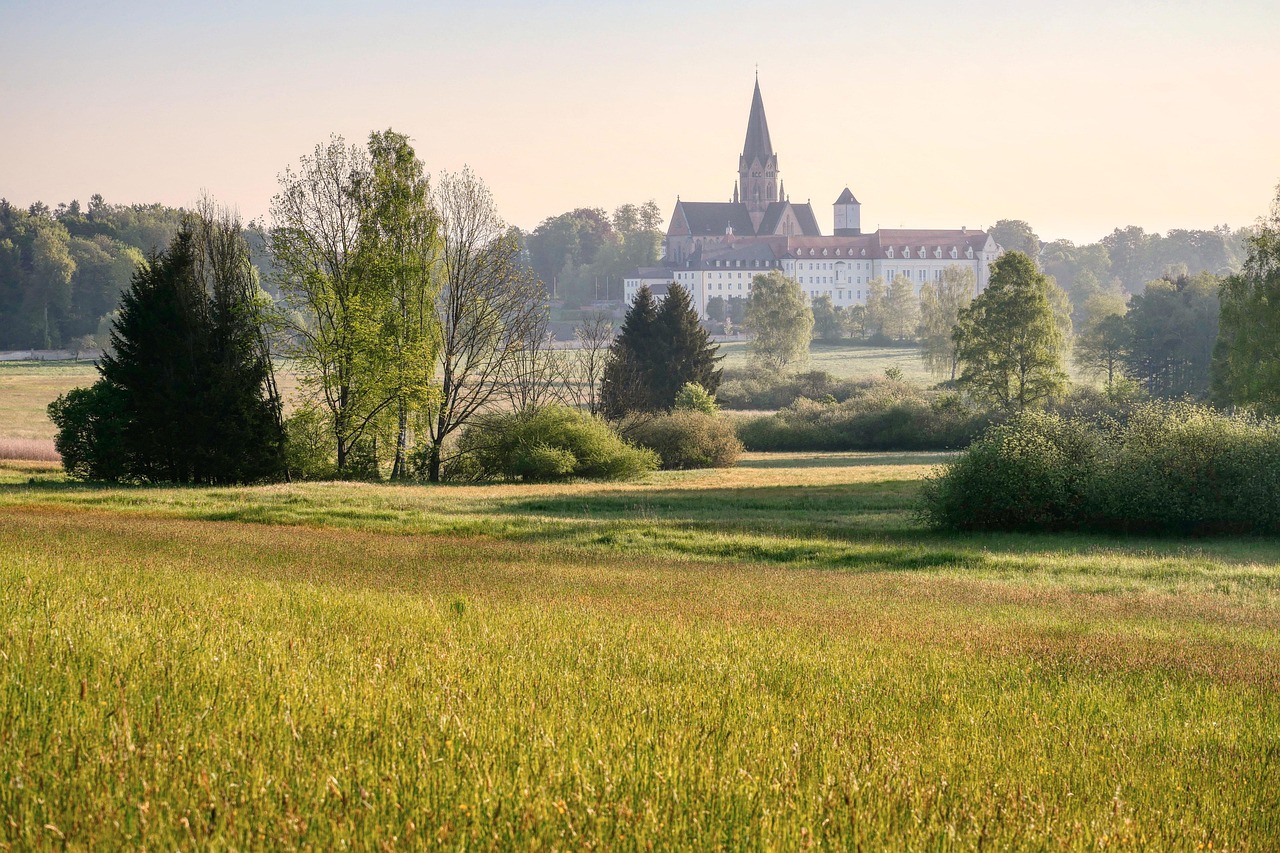A tree symbolizes spirituality through its deep roots, strong trunk, and expansive branches. These elements represent grounding, growth, and connection to the divine. Across various cultures, trees embody life, wisdom, and renewal, making them powerful spiritual symbols.
The Spiritual Significance of Trees
Trees have been revered in many cultures and religions as potent symbols of spirituality. Their physical characteristics often mirror spiritual concepts. The deep roots of a tree are seen as a connection to the earth, symbolizing stability and grounding. The trunk represents strength and support, while the branches and leaves point towards the heavens, illustrating a connection to the spiritual realm.

Many traditions view trees as sacred entities. They are often seen as living beings that can communicate with humans and serve as intermediaries between the earthly and divine realms. This belief is evident in various mythologies and religious texts around the world.
Cultural Perspectives on Trees
Different cultures interpret the symbolism of trees in unique ways. Here are some notable examples:
- Celtic Tradition: In Celtic mythology, trees were seen as sacred symbols of knowledge and wisdom. The Oak tree, in particular, was revered for its strength and longevity.
- Hinduism: The Banyan tree is considered sacred in Hinduism. It represents immortality and is often associated with divine presence.
- Native American Beliefs: Many Native American tribes regard trees as ancestors. They believe trees possess spirits and play crucial roles in the balance of nature.
- Buddhism: The Bodhi tree is famous for being the site where Siddhartha Gautama attained enlightenment. It symbolizes awakening and spiritual insight.
The Tree of Life
One of the most common symbols associated with trees is the “Tree of Life.” This concept appears in various religions and philosophies, representing interconnectedness and unity among all living things. The Tree of Life serves as a reminder that everything in existence is related, from the smallest microorganisms to the largest beings.

In many traditions, the Tree of Life signifies personal growth and development. It encourages individuals to reach for their highest potential while remaining grounded in their roots. The branches symbolize aspirations and dreams, while the roots represent heritage and personal history.
Symbolism in Art and Literature
Trees have also served as powerful symbols in art and literature throughout history. Artists often depict trees to convey themes of life, death, and rebirth. For instance, Vincent van Gogh’s “The Olive Trees” illustrates how trees can evoke emotions tied to spirituality.
In literature, trees often symbolize life cycles. They can represent both stability and impermanence. Authors like J.R.R. Tolkien incorporated trees into their narratives to symbolize growth and resilience against adversity. The Ents in “The Lord of the Rings” serve as guardians of nature, representing the wisdom of ancient beings.

Scientific Perspectives on Trees
Beyond cultural interpretations, modern science also reveals fascinating insights into the significance of trees. Research shows that trees positively impact mental health by providing tranquility and reducing stress levels. The presence of trees in urban environments leads to improved air quality and biodiversity, further underscoring their importance.
The interconnectedness of trees through root systems highlights a natural network that mirrors spiritual connections among humans. Trees communicate with each other through underground fungal networks, sharing nutrients and information. This phenomenon emphasizes the idea of unity and collaboration, essential themes in spirituality.
Table: Tree Symbolism Across Cultures
| Cultural Context | Tree Symbol | Spiritual Meaning |
|---|---|---|
| Celtic | Oak Tree | Strength and Knowledge |
| Hinduism | Banyan Tree | Immortality |
| Native American | Various Trees | Ancestry and Spirits |
| Buddhism | Bodhi Tree | Enlightenment |
The multifaceted symbolism of trees transcends boundaries, touching on themes of life, death, growth, and spirituality. As we explore deeper into their meanings across cultures, we uncover insights that resonate with our own spiritual journeys.
The Tree as a Metaphor for Personal Growth
Trees are often used as metaphors for personal growth and development. Just as a tree grows from a tiny seed into a towering presence, individuals can experience transformation throughout their lives. This growth process is essential to many spiritual practices and philosophies.

Each stage of a tree’s life cycle can be seen as analogous to human experiences:
- Seed Stage: This represents potential and the beginning of one’s journey. Just as a seed must be planted in fertile soil, individuals must cultivate their environments to foster growth.
- Root Development: Roots grow deep and wide, symbolizing the importance of establishing a strong foundation. This stage reflects the necessity of self-awareness and personal values.
- Trunk Growth: The trunk signifies strength and resilience. As individuals face challenges, they strengthen their character and resolve, much like a tree withstands storms.
- Branching Out: Branches symbolize exploration and reaching out. This stage encourages individuals to pursue their dreams and connect with others.
- Leafing and Fruiting: The leaves represent creativity and expression, while fruit symbolizes the rewards of growth. The culmination of personal efforts leads to fulfillment and sharing one’s gifts with the world.
The Role of Trees in Meditation and Reflection
Trees often serve as focal points in meditation practices. Their calming presence encourages mindfulness and reflection. Many people find solace in nature, using trees as a backdrop for contemplation. Here are some ways trees contribute to meditation:
- Grounding: Sitting beneath a tree can provide a sense of stability and grounding. This connection to the earth helps individuals feel centered.
- Mindfulness: The rustling of leaves and the scent of bark can enhance sensory awareness. Engaging with nature promotes mindfulness, allowing individuals to live in the moment.
- Visual Focus: Observing the intricate details of a tree—the texture of its bark, the patterns of its leaves—can help quiet the mind and foster inner peace.
- Nature Connection: Trees symbolize life and interconnectedness. Meditating near trees can deepen one’s understanding of their relationship with nature and all living beings.
Symbolism in Different Seasons
The changing seasons also enhance the symbolism of trees. Each season reflects various stages of life and spiritual experience:
- Spring: This season embodies renewal, rebirth, and new beginnings. Trees bloom with fresh leaves and blossoms, symbolizing hope and potential.
- Summer: Summer represents growth and abundance. Trees are full of life, providing shade and shelter, much like individuals nurturing relationships and projects during this time.
- Autumn: This season signifies transition and letting go. As trees shed their leaves, it reflects the importance of releasing what no longer serves us, making way for new experiences.
- Winter: Winter symbolizes rest and introspection. Trees may appear bare but are preparing for renewal beneath the surface, reminding us that stillness is essential for future growth.
Trees in Spiritual Practices Worldwide
Trees play crucial roles in various spiritual practices around the globe. They are often central to rituals, celebrations, and teachings. Below are examples of how trees are integrated into spiritual practices:
- Ceremonial Uses: In many cultures, trees are used in ceremonies to honor ancestors or connect with nature spirits. For example, Native American tribes may hold rituals around sacred trees to seek guidance.
- Ritual Offerings: In some traditions, offerings such as flowers, fruit, or cloth are tied to trees as a gesture of respect or gratitude toward deities associated with nature.
- Symbolic Trees in Scripture: Various religions include significant trees in their texts. For instance, the Tree of Knowledge in the Bible represents wisdom and moral choice.
- Pilgrimages: Certain trees are pilgrimage sites where individuals journey to seek blessings, healing, or enlightenment. These sacred trees often hold historical or religious significance.
The Environmental Aspect of Spirituality
In addition to their symbolic meanings, trees remind us of our responsibility toward the environment. Spirituality often emphasizes stewardship of the earth. Protecting trees aligns with many spiritual beliefs about interconnectedness and respect for all forms of life.
This connection can inspire individuals to engage in environmental activism or conservation efforts. By nurturing trees and nature, people can express their spirituality through actions that promote sustainability and harmony with the planet.
The multifaceted roles that trees play in spirituality underscore their significance across cultures. Whether through personal growth, meditation practices, or environmental stewardship, trees remain powerful symbols that resonate with our spiritual journeys.
Tree Symbolism in Art and Literature
Trees have been prominent subjects in art and literature for centuries. Their enduring presence symbolizes various themes, including life, death, and the connection between the material and spiritual worlds. Artists and writers often use trees to convey complex emotions and ideas.
Symbolism in Visual Art
In visual art, trees can evoke a range of feelings and interpretations. Artists utilize trees to depict beauty, strength, and fragility. Here are some notable examples:
- Vincent van Gogh: His works, such as “The Olive Trees,” express emotion through vibrant colors and dynamic brushstrokes. The olive tree symbolizes peace and perseverance.
- Caspar David Friedrich: In his Romantic landscapes, trees often appear solitary, symbolizing introspection and the human soul’s connection to nature.
- Georgia O’Keeffe: O’Keeffe’s stylized representations of trees capture their essence and beauty, emphasizing their role in the natural landscape.
Through these artistic expressions, trees serve as metaphors for human experiences and emotions, bridging the gap between nature and spirituality.
Trees in Literature
Literature also portrays trees as potent symbols. They often represent growth, change, wisdom, and the passage of time. Several notable literary works feature trees as central symbols:
- “The Giving Tree” by Shel Silverstein: This beloved children’s book conveys themes of selflessness, love, and sacrifice through the relationship between a boy and a tree.
- “The Secret Life of Trees” by Peter Wohlleben: This non-fiction book reveals how trees communicate and cooperate, emphasizing their interconnectedness with other life forms.
- “Siddhartha” by Hermann Hesse: In this novel, the protagonist’s journey is often mirrored by the experiences of trees, symbolizing enlightenment and inner growth.
Through these narratives, authors explore the deeper meanings of life and spirituality, using trees as symbols of wisdom and transformation.
The Spiritual Connection Between Humans and Trees
The bond between humans and trees goes beyond symbolism; it encompasses a profound spiritual connection. Many traditions recognize trees as living beings that offer wisdom and guidance. This connection can manifest in various ways:
Rituals and Ceremonies
Trees play important roles in rituals across cultures. They are often involved in ceremonies that honor life cycles or significant events. Examples include:
- Weddings: Trees are frequently used in wedding ceremonies to symbolize growth and the intertwining of two lives. Couples may plant a tree together as a commitment to nurturing their relationship.
- Funerals: In some cultures, planting a tree at a gravesite symbolizes eternal life and serves as a living memorial to the deceased.
- Harvest Festivals: Trees are celebrated during harvest festivals where communities gather to honor the fruits of nature. These events often include rituals that express gratitude for sustenance.
The Therapeutic Benefits of Trees
The presence of trees has therapeutic effects on mental health and well-being. Many people find solace in nature, which can enhance spiritual practices. The benefits include:
- Stress Reduction: Spending time near trees can lower stress levels and promote relaxation. The calming sound of rustling leaves has a soothing effect on the mind.
- Enhanced Creativity: Nature often inspires creativity. Artists, writers, and thinkers find clarity and new ideas while surrounded by trees.
- Mindfulness Practice: Engaging with trees can improve mindfulness. Observing their growth patterns encourages individuals to be present in the moment.
The Role of Trees in Ecological Spirituality
Ecological spirituality emphasizes the interconnectedness of all living things. Trees are vital components of ecosystems and play an essential role in maintaining environmental balance. This perspective highlights the spiritual significance of protecting our natural world.
Trees as Guardians of Biodiversity
Trees serve as habitats for countless species. They provide shelter, food, and protection for various animals, plants, and microorganisms. This ecological role reinforces the idea that preserving trees is crucial for maintaining biodiversity.
The loss of forests due to deforestation impacts not only wildlife but also human communities. Understanding this interconnectedness fosters a sense of responsibility toward environmental stewardship.
Community Involvement in Tree Planting
Many communities engage in tree planting initiatives to promote ecological health. These activities not only restore natural habitats but also strengthen community bonds. Participating in such efforts allows individuals to express their spirituality through actions that benefit both nature and society.
Trees symbolize much more than mere physical entities; they embody deep spiritual meanings that resonate across cultures. Their presence in art, literature, rituals, and ecological practices illustrates their significance in our spiritual journeys. The multifaceted representation of trees encourages us to reflect on our connections with nature, ourselves, and the world around us.
The Role of Trees in Spiritual Awakening
The journey toward spiritual awakening can often be mirrored in the growth and characteristics of trees. Just as trees undergo seasons of growth, dormancy, and renewal, individuals experience phases of enlightenment and self-discovery. This connection underscores the importance of trees as symbols in spiritual practices.
Nature as a Teacher
Trees offer profound lessons about resilience and adaptability. They thrive in diverse environments and often overcome adversity, such as storms or droughts. This ability to withstand challenges serves as a powerful metaphor for human experiences. Some key lessons include:
- Patience: Trees take years to mature. This teaches us that growth is a gradual process requiring time and effort.
- Strength in Flexibility: Trees bend in the wind rather than break. This symbolizes the importance of adaptability in facing life’s challenges.
- Interconnectedness: Trees rely on a network of roots and symbiotic relationships with other organisms. This reflects the idea that we are all connected and dependent on one another.
Spiritual Practices Involving Trees
Many spiritual practices incorporate trees as focal points for meditation, reflection, and prayer. These practices often enhance one’s connection to nature and the divine. Examples include:
- Tree Meditation: Practitioners often meditate beneath a tree, visualizing themselves as part of its ecosystem. This can lead to a deeper understanding of one’s place in the world.
- Grounding Techniques: Standing barefoot on the earth beneath a tree can help individuals feel grounded and connected to nature, promoting a sense of peace.
- Tree Rituals: Many cultures perform rituals around trees, such as offering prayers or tying ribbons to their branches as symbols of hope and intention.
Ecological Wisdom and Spirituality
The relationship between spirituality and ecology has gained prominence in recent years. Many spiritual traditions emphasize the need for environmental stewardship, viewing it as a sacred duty. Trees play a crucial role in this ecological wisdom, reminding us of our responsibility to protect the planet.
Sustainability Practices
Incorporating sustainable practices into daily life not only benefits the environment but also enhances spiritual well-being. Some sustainable practices include:
- Reforestation Efforts: Participating in or supporting tree-planting initiatives helps restore ecosystems and combat climate change.
- Permaculture: This approach to gardening mimics natural ecosystems, promoting biodiversity while fostering a deeper connection to the earth.
- Mindful Consumption: Being conscious of how products affect the environment encourages individuals to make choices that align with their spiritual values.
Final Thoughts
Trees symbolize much more than mere physical forms; they embody essential spiritual meanings that resonate deeply within various cultures. Their presence in our lives offers insights into growth, resilience, and our interconnectedness with nature and each other. Through art, literature, rituals, and ecological practices, trees invite us to explore our spirituality and reflect on our roles within the larger tapestry of life.
As we nurture our relationship with trees and the natural world, we cultivate a deeper understanding of ourselves and our place in the universe. The journey of spirituality is akin to that of a tree; it requires patience, nurturing, and an openness to growth. By embracing the symbolism of trees, we can foster a greater sense of purpose, connection, and harmony within ourselves and the world around us.
In conclusion, recognizing the spiritual significance of trees encourages us to honor their role not just as physical entities but as living symbols of our growth, resilience, and interconnectedness. By engaging with trees and nature mindfully, we enrich our spiritual journeys while contributing to the well-being of our planet.
